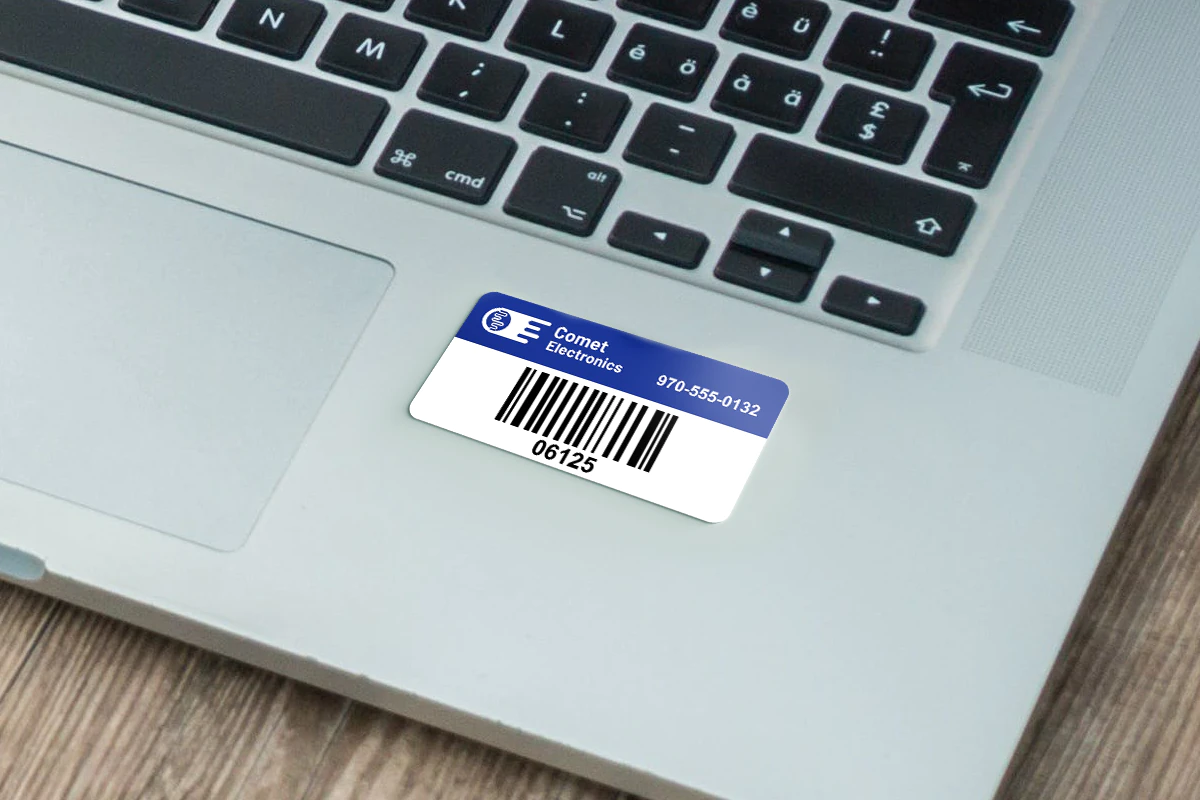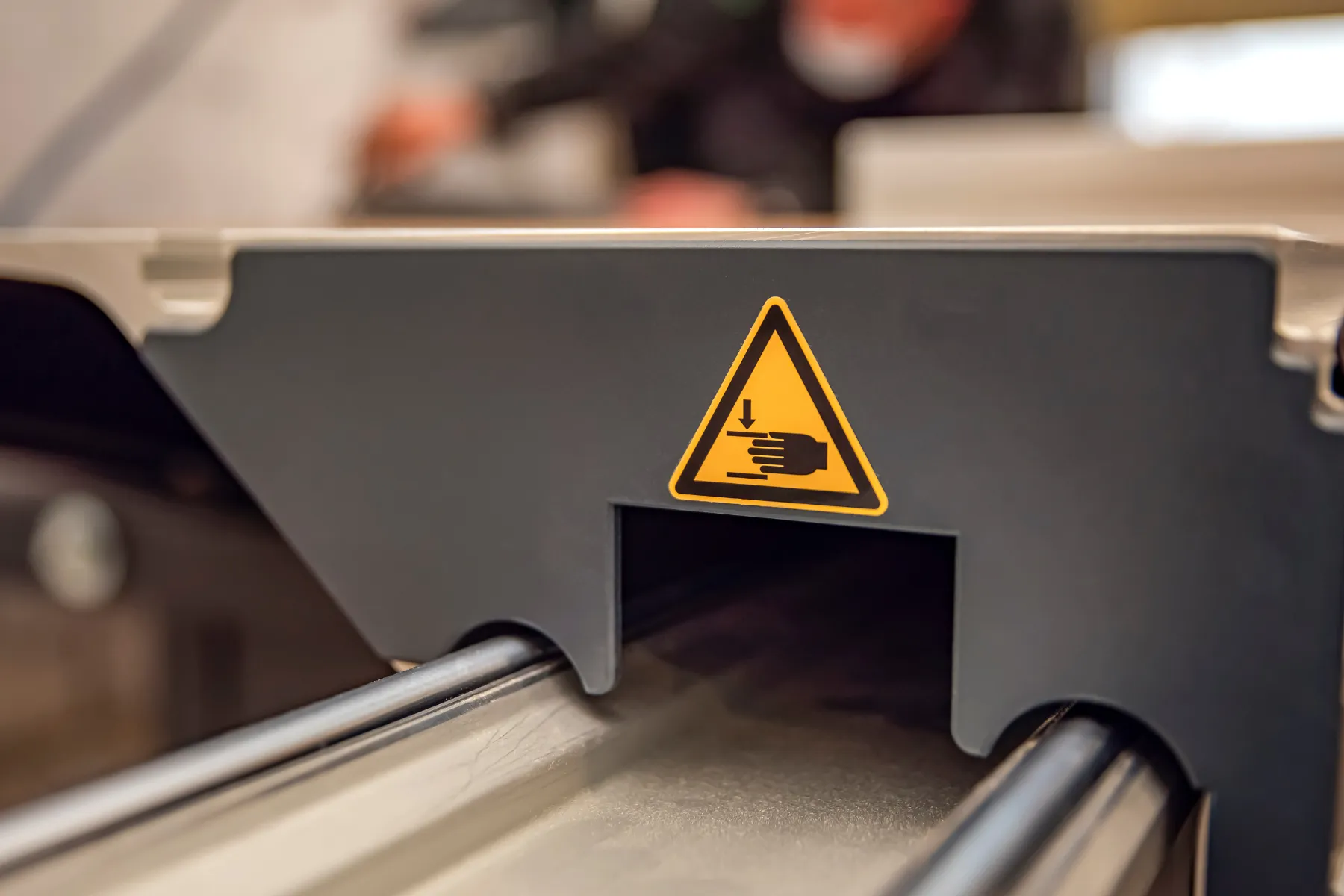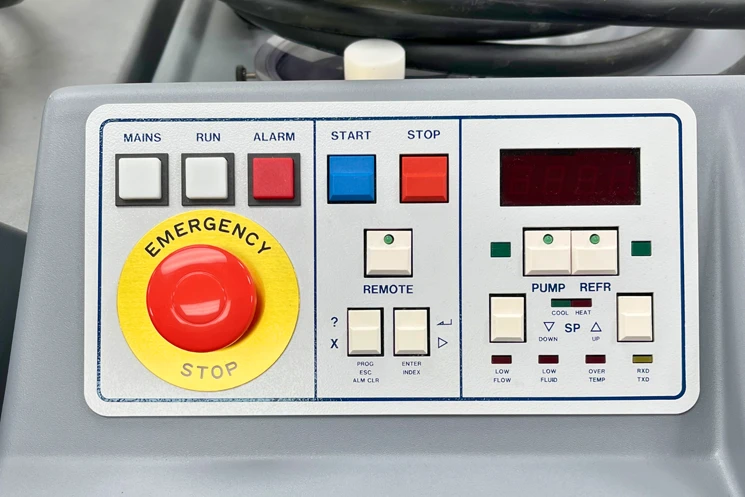Labels and overlays used on food processing control panels must survive routine washdowns, resist chemicals, and stay legible under high use.
If you’re managing a production line where moisture, heat, and sanitizer exposure are daily concerns, your panel labeling needs to be engineered for that reality. Choosing the wrong material leads to fading, peeling, and eventual risk.
Key Requirements for Food Processing Control Panels
Material Durability
Food processing environments often involve:
- High humidity and moisture
- Frequent hot water or chemical washdowns
- Grease, oils, and acidic residues
For overlays and labels, this means avoiding paper or standard vinyl. Materials like polycarbonate or polyester with hardcoats offer long-term clarity and resistance. Pairing these with 3M 467 or 468MP adhesives ensures strong bonding to stainless steel or powder-coated enclosures.
Regulatory Compliance
Labels used in food environments should:
- Align with NSF, FDA, or IP69K expectations
- Be easy to wipe clean and sanitize
- Avoid trapping particles or degrading over time
Control panel labeling must contribute to hygiene—not compromise it. Many plants now use overlays with flush-mounted surfaces to reduce bacterial harborage points.
| Control Panel Zone | Exposure Type | Recommended Overlay Type |
|---|---|---|
| Main Operator Panel | Glove contact, splash | Textured polycarbonate + back-printing |
| CIP System Interface | Caustics, pressure wash | Smooth polyester + IP69K-rated adhesive |
| Ambient Packaging Line | Dry touch, low humidity | Laminated vinyl or cost-effective PET |
Application and Maintenance Factors
Feedback from operations teams shows:
- Raised buttons and embossed graphics improve usability with gloves
- Back-printed graphics stay readable even if the surface degrades
- Peel-resistant edges are critical where corners meet frequent washdowns
A poorly applied label is worse than none—it invites compliance issues. Choosing the right construction upfront avoids early failure and unnecessary replacements.
How One Poultry Plant Improved Line Uptime
A mid-sized poultry processor ran into frequent relabeling issues on several control panels located near scalding tanks and overhead conveyors. These areas were subject to extreme heat, continuous moisture, and daily sanitization using caustic washdowns.
The facility had been using standard laminated vinyl overlays, which began to bubble, peel, and delaminate within eight weeks—especially along panel edges and buttons exposed to steam and glove contact.
Operators frequently had to stop production to troubleshoot misreads or input errors caused by unreadable labels. Relabeling required manual shutdowns, incurred overtime, and introduced inspection risk.
After evaluating material failure points, the company switched to polycarbonate overlays with UV-cured sub-surface print and 3M 467MP adhesive. These overlays offered stronger chemical resistance and stayed securely bonded even after repeated steam exposure and surface wiping.
The result? Labeling lifespan jumped from two months to over 14 months, and unplanned downtime from panel-related issues dropped by 40%. The change paid for itself in reduced maintenance hours alone—before even factoring in regulatory peace of mind.
When to Replace Overlays or Labels
Signs that your panel labels or overlays may need replacing:
- Graphics are faded or illegible
- Adhesive is lifting, especially at corners
- Surface feels brittle or bubbled
- Inspection reports call out visibility or sanitation concerns
Routine visual checks—especially after steam cleaning or chemical exposure—help maintain compliance and performance.
Built to Work in Food Processing Conditions
If your control panels operate in high-moisture, high-wear environments, labels are more than decoration—they’re a safety and usability factor. Our custom graphic overlays are built to stay in place, stay legible, and stay compliant under washdowns, abrasion, and constant contact.
Food Processing Control Panels FAQs
Start with layout clarity. Group related functions, reduce label clutter, and use consistent symbols across overlays.
Choose materials that remain legible under harsh conditions, and consider tactile elements like raised icons for gloved operation. For more practical ideas, this article on control panel fixes covers real-world adjustments that improve usability without a complete redesign.
Polycarbonate and hard-coated polyester offer the best resistance to moisture, chemicals, and abrasion in food processing environments.
IP69K labels can withstand high-pressure, high-temperature washdowns. This rating requires specific construction using sealed adhesives and durable substrates.
Inspect labels quarterly. Replace when edges lift, text fades, or surfaces become rough or delaminated. High-heat or washdown zones may need more frequent review.
Yes. Labels should not contaminate food or harbor bacteria. Use cleanable, non-porous materials with compliant adhesives.
Yes—if the right materials are used. Polycarbonate or polyester overlays with UV-cured ink and sealed adhesives perform best under caustic cleaning regimens.
Using vinyl or paper labels, not sealing edges, skipping adhesive specs, or ignoring thermal expansion—all lead to early failure.
Simulate washdowns, abrasion, and chemical exposure. Look for edge lift, fading, or graphic distortion over 30–60 day test cycles.



